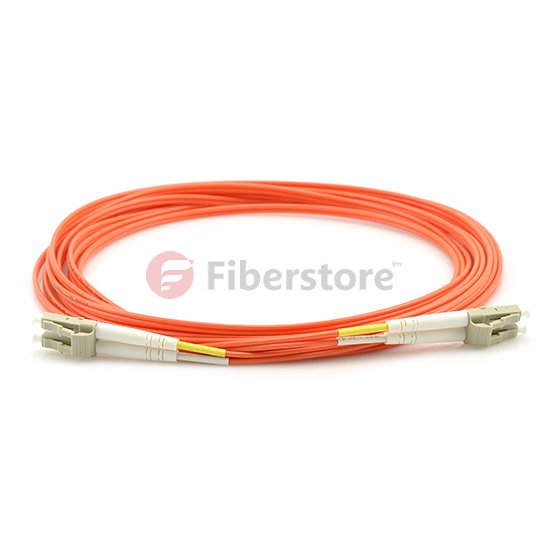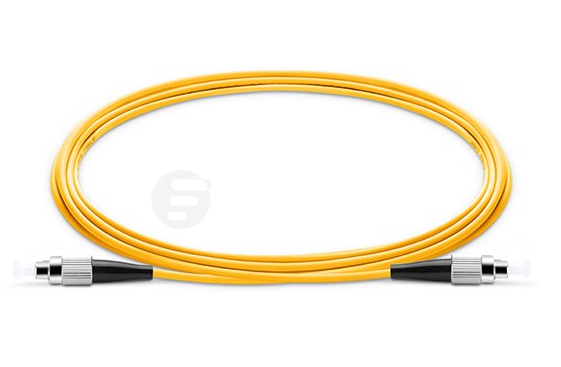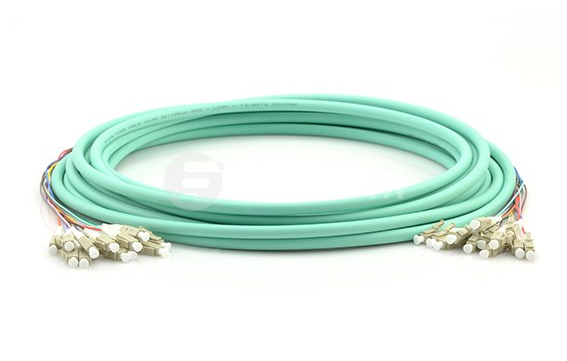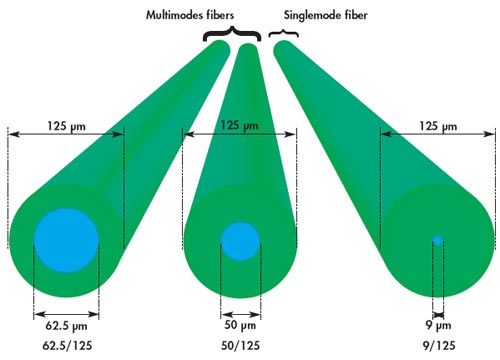An optical fiber connector terminates the end of an optical fiber. A variety of optical fiber connectors are available. The main differences among the types of connectors are dimensions and methods of mechanical coupling. Generally, organizations standardize on one kind of connector, depending on the equipment that they commonly use, or they standardize per type of fiber (one for MMF, one for SMF). Taking into account all the generations of connectors, about 70 connector types are in use today.
As shown Figure 4-12, the most popular network fiber-optic connectors inclued
● Straight-tip (ST): An older bayonet style connector widely used with multimode fiber, as well as single-mode.
● Subscriber connector (SC): Sometimes referred to as square connector or standard connector. It is a widely adopted LAN and WAN connector that uses a push-pull mechanism to ensure positve insertion. This connector type is used with multimode and single-mode fiber.
● Lucent connector (LC): Sometimes called a little or local connector, it is quickly growing in popularity because of its smaller size. It is used with single-mode fiber and also supports multimode fiber.
Because light typically only travels in one direction over optical fiber, two fibers are usually required to support full-duplex operation. Therefore, fiber-optic patch cables bundle together two optical fiber cables and terminate them with a pair of standard single fiber connectors. Some fiber connectors accept both the transmitting and receiving fibers in a single connector known as a duplex connector, also shown in Figure 4-12.
Fiber Optic Patch Cables are required for interconnecting infrastructure devices. Some of the common patch cords are
● SC-SC multimode patch cord
● LC-LC single-mode patch cord
● ST-LC multimode patch cord
● SC-ST single-mode patch cord
LC LC fiber optic cable from Fiberstore
● LC-LC Connectors
● Multimode Duplex fiber optic cable
● Micron: 62.5/125um
● Complete with Lucent Technologies aqua jacket
● Bandwidth transmitting rates up to 10 gigabits
● All of our fiber optic patch cables feature the high degree connectors
● Fiber class: OM1
● Color: Orange
Fiber cables should be protected with a small plastic cap when not in use.
The color of the fiber jacket is often used to distinguish between single-mode and multimode patch cords. This is because of the TIA-598 standard, which recommends the use of yellow jacket for single-mdoe fiber cables and orange (or aqua) for multimode fiber cables.
Fiberstore provide various types of fiber patch cords including single mode, multimode, multi core, and armored versions. You can aslo find fiber optic pigtails and other special patch cables here. For most of them, the SC, ST, FC, LC, MU, MTRJ, E2000, APC/UPC connectors are all available, even we supply MPO/MTP fiber cables.





